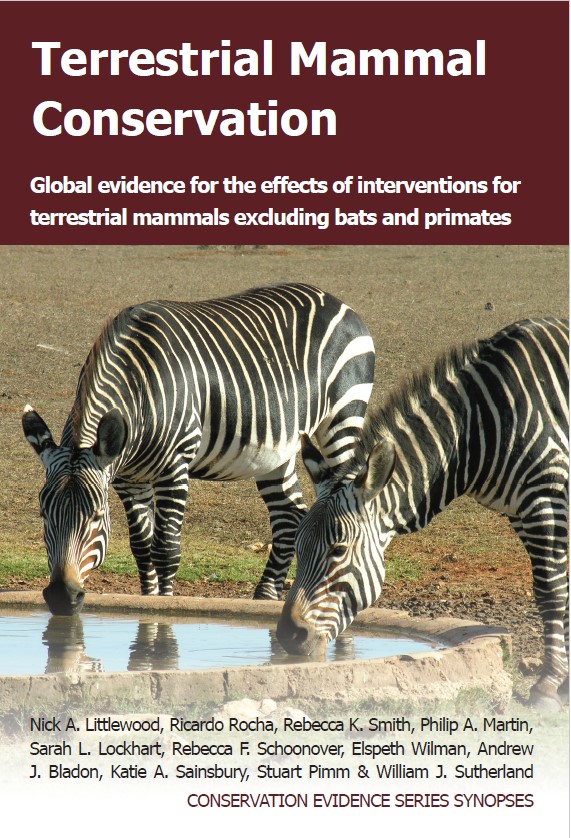Translocate mammals away from sites of proposed energy developments
-
Overall effectiveness category Unknown effectiveness (limited evidence)
-
Number of studies: 2
View assessment score
Hide assessment score
How is the evidence assessed?
-
Effectiveness
50% -
Certainty
23% -
Harms
5%
Study locations
Supporting evidence from individual studies
A study in 1996–1998 of savanna at a hydroelectric development scheme in Goiás, Brazil (Rodrigues et al. 2001) found that translocated lesser anteaters Tamandua tetradactyla remained close to release sites up to at least nine months after release. Anteaters moved 0.3–2.2 km from release sites during tracking periods. The greatest distances between recorded points in each anteater’s range were 0.3–2.6 km. Eight adult lesser anteaters were moved from an area being flooded for a reservoir and were released at the edge of the reservoir (distances from capture to release sites not stated). They were monitored by radio-tracking, over two weeks each month. Animals were monitored for between four days and nine months and were located between two and thirty times in total, between December 1996 and February 1998.
Study and other actions testedA study in 2016 in a forest site in Western Australia, Australia (Cannella & Henry 2017) found that following translocation away from an area being cleared for mining, at least one out of eight chuditchs Dasyurus geoffroii returned to its area of capture. Out of eight translocated chuditchs, one was recaptured, 12 days after release, close to the initial capture site. Its recapture site was 13.5 km from the release point and 1 km from the original capture location. Between first capture and recapture, the individual had lost 13% of its body weight but was otherwise in good condition. In January–March 2016, eight chuditchs were live-trapped across four 53–73-ha woodland plots about to be cleared for mining. Chuditchs were marked with PIT-tags and released in a forest area, approximately 14 km away (linear distance). No details are provided about the release procedures or about post-release monitoring.
Study and other actions tested
Where has this evidence come from?
List of journals searched by synopsis
All the journals searched for all synopses
This Action forms part of the Action Synopsis:
Terrestrial Mammal Conservation
Terrestrial Mammal Conservation - Published 2020
Terrestrial Mammal Conservation





)_2023.JPG)














